-
TLV237x 500-µA/Ch, 3-MHz Rail-to-Rail Input and Output Operational Amplifiers With Shutdown
- 1 Features
- 2 Applications
- 3 Description
- 4 Revision History
- 5 Device Comparison Tables
- 6 Pin Configuration and Functions
-
7 Specifications
- 7.1 Absolute Maximum Ratings
- 7.2 Recommended Operating Conditions
- 7.3 Thermal Information: TLV2370
- 7.4 Thermal Information: TLV2371
- 7.5 Thermal Information: TLV2372
- 7.6 Thermal Information: TLV2373
- 7.7 Thermal Information: TLV2374
- 7.8 Thermal Information: TLV2375
- 7.9 Electrical Characteristics
- 7.10 Typical Characteristics
- 8 Detailed Description
- 9 Application and Implementation
- 10Power Supply Recommendations
- 11Layout
- 12Device and Documentation Support
- 13Mechanical, Packaging, and Orderable Information
- IMPORTANT NOTICE
Package Options
Mechanical Data (Package|Pins)
Thermal pad, mechanical data (Package|Pins)
Orderable Information
TLV237x 500-µA/Ch, 3-MHz Rail-to-Rail Input and Output Operational Amplifiers With Shutdown
1 Features
- Rail-to-Rail Input and Output
- Wide Bandwidth: 3 MHz
- High Slew Rate: 2.4 V/μs
- Supply Voltage Range: 2.7 V to 16 V
- Supply Current: 550 μA/Channel
- Low-Power Shutdown Mode
- IDD(SHDN): 25 μA/Channel
- Input Noise Voltage: 39 nV/√Hz
- Input Bias Current: 1 pA
- Specified Temperature Range:
- −40°C to +125°C (Industrial Grade)
- Ultra-Small Packaging:
- 5- or 6-Pin SOT-23 (TLV2370, TLV2371)
- 8- or 10-Pin MSOP (TLV2372, TLV2373)
2 Applications
- White Goods
- Handheld Test Equipment
- Portable Blood Glucose Systems
- Remote Sensing
- Active Filters
- Industrial Automation
- Battery-Powered Electronics
Operational Amplifier
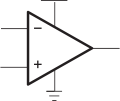
3 Description
The TLV237x single-supply operational amplifiers provide rail-to-rail input and output capability. The TLV237x takes the minimum operating supply voltage down to 2.7 V over the extended industrial temperature range while adding the rail-to-rail output swing feature. The TLV237x also provides 3-MHz bandwidth from only 550 μA. The maximum recommended supply voltage is 16 V, which allows the devices to be operated from (±8-V supplies down to ±1.35 V) a variety of rechargeable cells.
The CMOS inputs enable use in high-impedance sensor interfaces, with the lower voltage operation making an ideal alternative for the TLC227x in battery-powered applications. The rail-to-rail input stage further increases its versatility. The TLV237x is the seventh member of a rapidly growing number of RRIO products available from TI, and it is the first to allow operation up to 16-V rails with good ac performance.
All members are available in PDIP and SOIC with the singles in the small SOT-23 package, duals in the MSOP, and quads in the TSSOP package.
The 2.7-V operation makes the TLV237x compatible with Li-Ion powered systems and the operating supply voltage range of many micro-power microcontrollers available today including TI’s MSP430.
Device Information(1)
| PART NUMBER | PACKAGE | BODY SIZE (NOM) |
|---|---|---|
| TLV237x | PDIP (8) | 9.81 mm × 6.35 mm |
| PDIP (14) | 19.30 mm × 6.35 mm | |
| SOIC (8) | 4.90 mm × 3.91 mm | |
| SOIC (14) | 8.65 mm × 3.91 mm | |
| TSSOP (14) | 5.00 mm × 4.40 mm | |
| TSSOP (16) | ||
| SOT-23 (6) | 2.90 mm × 1.60 mm | |
| SOT-23 (5) | ||
| VSSOP (8) | 3.00 mm × 3.00 mm | |
| VSSOP (10) |
- For all available packages, see the orderable addendum at the end of the data sheet.
4 Revision History
Changes from E Revision (May 2016) to F Revision
- Changed names of pins 2 and 3 in TLV2372 D, DGK, and P packages pinout diagramGo
Changes from D Revision (January 2005) to E Revision
- Added ESD Ratings table, Feature Description section, Device Functional Modes, Application and Implementation section, Power Supply Recommendations section, Layout section, Device and Documentation Support section, and Mechanical, Packaging, and Orderable Information section.Go
- Deleted TLV2370 and TLV2371 Available Options, TLV2372 AND TLV2373 Available Options, and TLV2374 and TLV2375 Available Options tablesGo
- Deleted Continuous total power dissipation and lead temperature specifications from Absolute Maximum Ratings tableGo
- Deleted Dissipation Ratings table Go
5 Device Comparison Tables
Table 1. Selection of Signal Amplifier Products(1)
| DEVICE | VDD
(V) |
VIO
(µV) |
IQ/Ch (µA) |
IIB
(pA) |
GBW (MHz) |
SR (V/µs) |
SHUTDOWN | RAIL-TO-RAIL | SINGLES, DUALS, QUADS |
|---|---|---|---|---|---|---|---|---|---|
| TLV237x | 2.7 to 16 | 500 | 550 | 1 | 3 | 2.4 | Yes | I/O | S, D, Q |
| TLC227x | 4 to 16 | 300 | 1100 | 1 | 2.2 | 3.6 | — | O | D, Q |
| TLV27x | 2.7 to 16 | 500 | 550 | 1 | 3 | 2.4 | — | O | S, D, Q |
| TLC27x | 3 to 16 | 1100 | 675 | 1 | 1.7 | 3.6 | — | — | S, D, Q |
| TLV246x | 2.7 to 16 | 150 | 550 | 1300 | 6.4 | 1.6 | Yes | I/O | S, D, Q |
| TLV247x | 2.7 to 16 | 250 | 600 | 2 | 2.8 | 1.5 | Yes | I/O | S, D, Q |
| TLV244x | 2.7 to 10 | 300 | 725 | 1 | 1.8 | 1.4 | — | O | D, Q |
Table 2. Family Package Table(1)
| DEVICE | NUMBER OF CHANNELS | PACKAGE TYPES | SHUTDOWN | UNIVERSAL EVM BOARD | ||||
|---|---|---|---|---|---|---|---|---|
| PDIP | SOIC | SOT-23 | TSSOP | MSOP | ||||
| TLV2370 | 1 | 8 | 8 | 6 | — | — | Yes | See the EVM Selection Guide |
| TLV2371 | 1 | 8 | 8 | 5 | — | — | — | |
| TLV2372 | 2 | 8 | 8 | — | — | 8 | — | |
| TLV2373 | 2 | 14 | 14 | — | — | 10 | Yes | |
| TLV2374 | 4 | 14 | 14 | — | 14 | — | — | |
| TLV2375 | 4 | 16 | 16 | — | 16 | — | Yes | |
6 Pin Configuration and Functions


Pin Functions: TLV2370
| PIN | I/O | DESCRIPTION | ||
|---|---|---|---|---|
| NAME | SOT-23 | SOIC, PDIP | ||
| GND | 2 | 4 | — | Ground connection |
| IN– | 4 | 2 | I | Negative (inverting) input |
| IN+ | 3 | 3 | I | Positive (noninverting) input |
| NC | — | 1, 5 | — | No internal connection (can be left floating) |
| OUT | 1 | 6 | O | Output |
| SHDN | 5 | 8 | I | Shutdown control (active low, can be left floating) |
| VDD | 6 | 7 | — | Positive power supply |


Pin Functions: TLV2371
| PIN | I/O | DESCRIPTION | ||
|---|---|---|---|---|
| NAME | SOT-23 | SOIC, PDIP | ||
| GND | 2 | 4 | — | Ground connection |
| IN– | 4 | 2 | I | Negative (inverting) input |
| IN+ | 3 | 3 | I | Positive (noninverting) input |
| NC | — | 1, 5, 8 | — | No internal connection (can be left floating) |
| OUT | 1 | 6 | O | Output |
| VDD | 5 | 7 | — | Positive power supply |

Pin Functions: TLV2372


Pin Functions: TLV2373
| PIN | I/O | DESCRIPTION | ||
|---|---|---|---|---|
| NAME | SOIC, PDIP | VSSOP | ||
| GND | 4 | 4 | — | Ground connection |
| 1IN– | 2 | 2 | I | Inverting input, channel 1 |
| 1IN+ | 3 | 3 | I | Noninverting input, channel 1 |
| 2IN– | 12 | 8 | I | Inverting input, channel 2 |
| 2IN+ | 11 | 7 | I | Noninverting input, channel 2 |
| 1OUT | 1 | 1 | O | Output, channel 1 |
| 2OUT | 13 | 9 | O | Output, channel 2 |
| 1SHDN | 6 | 5 | I | Shutdown control, channel 1, (active low, can be left floating) |
| 2SHDN | 9 | 6 | I | Shutdown control, channel 2, (active low, can be left floating) |
| VDD | 14 | 10 | — | Positive power supply |
| NC | 5, 7, 8, 10 | — | — | No internal connection (can be left floating) |

Pin Functions: TLV2374
| PIN | I/O | DESCRIPTION | |
|---|---|---|---|
| NAME | SOIC, PDIP, TSSOP | ||
| GND | 11 | — | Ground connection |
| 1IN– | 2 | I | Inverting input, channel 1 |
| 1IN+ | 3 | I | Noninverting input, channel 1 |
| 2IN– | 6 | I | Inverting input, channel 2 |
| 2IN+ | 5 | I | Noninverting input, channel 2 |
| 3IN– | 9 | I | Inverting input, channel 3 |
| 3IN+ | 10 | I | Noninverting input, channel 3 |
| 4IN– | 13 | I | Inverting input, channel 4 |
| 4IN+ | 12 | I | Noninverting input, channel 4 |
| 1OUT | 1 | O | Output, channel 1 |
| 2OUT | 7 | O | Output, channel 2 |
| 3OUT | 8 | O | Output, channel 3 |
| 4OUT | 14 | O | Output, channel 4 |
| VDD | 4 | — | Positive power supply |

Pin Functions: TLV2375
| PIN | I/O | DESCRIPTION | |
|---|---|---|---|
| NAME | SOIC, PDIP, TSSOP | ||
| GND | 13 | — | Ground connection |
| 1IN– | 2 | I | Inverting input, channel 1 |
| 2IN– | 6 | I | Inverting input, channel 2 |
| 3IN– | 11 | I | Inverting input, channel 3 |
| 4IN– | 15 | I | Inverting input, channel 4 |
| 1IN+ | 3 | I | Noninverting input, channel 1 |
| 2IN+ | 5 | I | Noninverting input, channel 2 |
| 3IN+ | 12 | I | Noninverting input, channel 3 |
| 4IN+ | 14 | I | Noninverting input, channel 4 |
| 1OUT | 1 | O | Output, channel 1 |
| 2OUT | 7 | O | Output, channel 2 |
| 3OUT | 10 | O | Output, channel 3 |
| 4OUT | 16 | O | Output, channel 4 |
| 1/2SHDN | 8 | I | Shutdown control, channels 1 and 2, (active low, can be left floating) |
| 3/4SHDN | 9 | I | Shutdown control, channels 3 and 4, (active low, can be left floating) |
| VDD | 4 | — | Positive power supply |

7 Specifications
7.1 Absolute Maximum Ratings
over operating free-air temperature range (unless otherwise noted)(1)| MIN | MAX | UNIT | ||
|---|---|---|---|---|
| Voltage | Supply voltage, VDD (2) | 16.5 | V | |
| Differential input voltage, VID | –VDD | VDD | ||
| Input voltage, VI(2) | –0.2 | VDD + 0.2 | ||
| Current | Input current, IIN | –10 | 10 | mA |
| Output current, IO | –100 | 100 | ||
| Temperature | Operating free-air temperature, TA: I-suffix | –40 | 125 | °C |
| Maximum junction temperature, TJ | 150 | |||
| Storage temperature, Tstg | –65 | 150 | ||
7.2 Recommended Operating Conditions
over operating free-air temperature range (unless otherwise noted).| MIN | MAX | UNIT | |||
|---|---|---|---|---|---|
| Supply voltage, VDD | Single supply | 2.7 | 16 | V | |
| Split supply | ±1.35 | ±8 | |||
| Common-mode input voltage, VCM | 0 | VDD | V | ||
| Operating free-air temperature, TA | I-suffix | –40 | 125 | °C | |
| Turnon voltage (shutdown pin voltage level), V(ON), relative to GND pin voltage | 2 | V | |||
| Turnoff (shutdown pin voltage level), V(OFF), relative to GND pin voltage | 0.8 | V | |||
7.3 Thermal Information: TLV2370
| THERMAL METRIC(1) | TLV2370 | UNIT | |||
|---|---|---|---|---|---|
| DBV (SOT-23) | D (SOIC) | P (PDIP) | |||
| 6 PINS | 8 PINS | 8 PINS | |||
| RθJA | Junction-to-ambient thermal resistance | 228.5 | 138.4 | 49.2 | °C/W |
| RθJC(top) | Junction-to-case (top) thermal resistance | 99.1 | 89.5 | 39.4 | °C/W |
| RθJB | Junction-to-board thermal resistance | 54.6 | 78.6 | 26.4 | °C/W |
| ψJT | Junction-to-top characterization parameter | 7.7 | 29.9 | 15.4 | °C/W |
| ψJB | Junction-to-board characterization parameter | 53.8 | 78.1 | 26.3 | °C/W |
| RθJC(bot) | Junction-to-case (bottom) thermal resistance | n/a | n/a | n/a | °C/W |
7.4 Thermal Information: TLV2371
| THERMAL METRIC(1) | TLV2371 | UNIT | |||
|---|---|---|---|---|---|
| DBV (SOT-23) | D (SOIC) | P (PDIP) | |||
| 5 PINS | 8 PINS | 8 PINS | |||
| RθJA | Junction-to-ambient thermal resistance | 228.5 | 138.4 | 49.2 | °C/W |
| RθJC(top) | Junction-to-case (top) thermal resistance | 99.1 | 89.5 | 39.4 | °C/W |
| RθJB | Junction-to-board thermal resistance | 54.6 | 78.6 | 26.4 | °C/W |
| ψJT | Junction-to-top characterization parameter | 7.7 | 29.9 | 15.4 | °C/W |
| ψJB | Junction-to-board characterization parameter | 53.8 | 78.1 | 26.3 | °C/W |
| RθJC(bot) | Junction-to-case (bottom) thermal resistance | n/a | n/a | n/a | °C/W |
7.5 Thermal Information: TLV2372
| THERMAL METRIC(1) | TLV2372 | UNIT | |||
|---|---|---|---|---|---|
| D (SOIC) | DGK (VSSOP) | P (PDIP) | |||
| 8 PINS | 8 PINS | 8 PINS | |||
| RθJA | Junction-to-ambient thermal resistance | 138.4 | 191.2 | 49.2 | °C/W |
| RθJC(top) | Junction-to-case (top) thermal resistance | 89.5 | 61.9 | 39.4 | °C/W |
| RθJB | Junction-to-board thermal resistance | 78.6 | 111.9 | 26.4 | °C/W |
| ψJT | Junction-to-top characterization parameter | 29.9 | 5.1 | 15.4 | °C/W |
| ψJB | Junction-to-board characterization parameter | 78.1 | 110.2 | 26.3 | °C/W |
| RθJC(bot) | Junction-to-case (bottom) thermal resistance | n/a | n/a | n/a | °C/W |
7.6 Thermal Information: TLV2373
| THERMAL METRIC(1) | TLV2373 | UNIT | |||
|---|---|---|---|---|---|
| DGS (VSSOP) | D (SOIC) | P (PDIP) | |||
| 10 PINS | 14 PINS | 14 PINS | |||
| RθJA | Junction-to-ambient thermal resistance | 166.5 | 67 | 66.3 | °C/W |
| RθJC(top) | Junction-to-case (top) thermal resistance | 41.8 | 24.1 | 20.5 | °C/W |
| RθJB | Junction-to-board thermal resistance | 86.1 | 22.5 | 26.8 | °C/W |
| ψJT | Junction-to-top characterization parameter | 1.5 | 2.2 | 2.1 | °C/W |
| ψJB | Junction-to-board characterization parameter | 84.7 | 22.1 | 26.2 | °C/W |
| RθJC(bot) | Junction-to-case (bottom) thermal resistance | n/a | n/a | n/a | °C/W |
7.7 Thermal Information: TLV2374
| THERMAL METRIC(1) | TLV2374 | UNIT | |||
|---|---|---|---|---|---|
| D (SOIC) | N (PDIP) | PW (TSSOP) | |||
| 14 PINS | 14 PINS | 14 PINS | |||
| RθJA | Junction-to-ambient thermal resistance | 67 | 66.3 | 121 | °C/W |
| RθJC(top) | Junction-to-case (top) thermal resistance | 24.1 | 20.5 | 49.4 | °C/W |
| RθJB | Junction-to-board thermal resistance | 22.5 | 26.8 | 62.8 | °C/W |
| ψJT | Junction-to-top characterization parameter | 2.2 | 2.1 | 5.9 | °C/W |
| ψJB | Junction-to-board characterization parameter | 22.1 | 26.2 | 62.2 | °C/W |
| RθJC(bot) | Junction-to-case (bottom) thermal resistance | n/a | n/a | n/a | °C/W |
7.8 Thermal Information: TLV2375
| THERMAL METRIC(1) | TLV2375 | UNIT | |||
|---|---|---|---|---|---|
| D (SOIC) | N (PDIP) | PW (TSSOP) | |||
| 16 PINS | 16 PINS | 16 PINS | |||
| RθJA | Junction-to-ambient thermal resistance | 83 | 55.8 | 115.6 | °C/W |
| RθJC(top) | Junction-to-case (top) thermal resistance | 44 | 43.1 | 50.5 | °C/W |
| RθJB | Junction-to-board thermal resistance | 40.5 | 35.8 | 60.7 | °C/W |
| ψJT | Junction-to-top characterization parameter | 11.5 | 27.9 | 7.4 | °C/W |
| ψJB | Junction-to-board characterization parameter | 40.2 | 35.7 | 60.1 | °C/W |
| RθJC(bot) | Junction-to-case (bottom) thermal resistance | n/a | n/a | n/a | °C/W |
7.9 Electrical Characteristics
at TA = 25°C, VDD = 2.7 V, 5 V, and 15 V (unless otherwise noted).| PARAMETER | TEST CONDITIONS | MIN | TYP | MAX | UNIT | ||
|---|---|---|---|---|---|---|---|
| DC PERFORMANCE | |||||||
| VOS | Input offset voltage | At TA = 25°C, VIC = VDD/2, VO = VDD/2, RS = 50 Ω | 2 | 4.5 | mV | ||
| At TA = –40°C to +125°C, VIC = VDD/2, VO = VDD/2, RS = 50 Ω |
6 | mV | |||||
| dVOS/dT | Offset voltage drift | At TA = 25°C, VIC = VDD/2, VO = VDD/2, RS = 50 Ω | 2 | µV/°C | |||
| CMRR | Common-mode rejection ratio | VDD = 2.7 V, RS = 50 Ω |
VIC = 0 to VDD | 50 | 68 | dB | |
| At TA = –40°C to +125°C, VIC = 0 to VDD |
49 | ||||||
| VIC = 0 to VDD − 1.35 V | 56 | 70 | |||||
| At TA = –40°C to +125°C, VIC = 0 to VDD − 1.35 V |
54 | ||||||
| VDD = 5 V, RS = 50 Ω |
VIC = 0 to VDD | 55 | 72 | ||||
| At TA = –40°C to +125°C, VIC = 0 to VDD |
54 | ||||||
| VIC = 0 to VDD − 1.35 V | 67 | 80 | |||||
| At TA = –40°C to +125°C, VIC = 0 to VDD − 1.35 V |
64 | ||||||
| VDD = 15 V, RS = 50 Ω |
VIC = 0 to VDD | 64 | 82 | ||||
| At TA = –40°C to +125°C, VIC = 0 to VDD |
63 | ||||||
| VIC = 0 to VDD − 1.35 V | 67 | 84 | |||||
| At TA = –40°C to +125°C, VIC = 0 to VDD − 1.35 V |
66 | ||||||
| AVD | Large-signal differential voltage amplification | VDD = 2.7 V, VO(PP) = VDD/2, RL = 10 kΩ |
98 | 106 | dB | ||
| At TA = –40°C to +125°C | 76 | ||||||
| VDD = 5 V, VO(PP) = VDD/2, RL = 10 kΩ |
100 | 110 | |||||
| At TA = –40°C to +125°C | 86 | ||||||
| VDD = 15 V, VO(PP) = VDD/2, RL = 10 kΩ |
81 | 83 | |||||
| At TA = –40°C to +125°C | 79 | ||||||
| INPUT CHARACTERISTICS | |||||||
| IOS | Input offset current | VDD = 15 V, VIC = VO = VDD/2 |
1 | 60 | pA | ||
| At TA = 70°C | 100 | ||||||
| At TA = 125°C | 1000 | ||||||
| IB | Input bias current | VDD = 15 V, VIC = VO = VDD/2 |
1 | 60 | pA | ||
| At TA = 70°C | 100 | ||||||
| At TA = 125°C | 1000 | ||||||
| Differential input resistance | 1000 | GΩ | |||||
| Common-mode input capacitance | f = 21 kHz | 8 | pF | ||||
| OUTPUT CHARACTERISTICS | |||||||
| VOH | High-level output voltage | VDD = 2.7 V | At TA = 25°C, VIC = VDD/2, IOH = −1 mA | 2.55 | 2.58 | V | |
| At TA = –40°C to +125°C, VIC = VDD/2, IOH = −1 mA |
2.48 | ||||||
| VDD = 5 V | At TA = 25°C, VIC = VDD/2, IOH = −1 mA | 4.9 | 4.93 | ||||
| At TA = –40°C to +125°C, VIC = VDD/2, IOH = −1 mA |
4.85 | ||||||
| VDD = 15 V | At TA = 25°C, VIC = VDD/2, IOH = −1 mA | 14.92 | 14.96 | ||||
| At TA = –40°C to +125°C, VIC = VDD/2, IOH = −1 mA |
14.9 | ||||||
| VDD = 2.7 V | At TA = 25°C, VIC = VDD/2, IOH = −5 mA | 1.9 | 2 | ||||
| At TA = –40°C to +125°C, VIC = VDD/2, IOH = −5 mA |
1.6 | ||||||
| VDD = 5 V | At TA = 25°C, VIC = VDD/2, IOH = −5 mA | 4.6 | 4.68 | ||||
| At TA = –40°C to +125°C, VIC = VDD/2, IOH = −5 mA |
4.5 | ||||||
| VDD = 15 V | At TA = 25°C, VIC = VDD/2, IOH = −5 mA | 14.7 | 14.8 | ||||
| At TA = –40°C to +125°C, VIC = VDD/2, IOH = −5 mA |
14.6 | ||||||
| VOL | Low-level output voltage | VDD = 2.7 V | At TA = 25°C, VIC = VDD/2, IOL = 1 mA | 0.1 | 0.15 | ||
| At TA = –40°C to +125°C, VIC = VDD/2, IOL = 1 mA |
0.22 | V | |||||
| VDD = 5 V | At TA = 25°C, VIC = VDD/2, IOL = 1 mA | 0.05 | 0.1 | ||||
| At TA = –40°C to +125°C, VIC = VDD/2, IOL = 1 mA |
0.15 | ||||||
| VDD = 15 V | At TA = 25°C, VIC = VDD/2, IOL = 1 mA | 0.05 | 0.08 | ||||
| At TA = –40°C to +125°C, VIC = VDD/2, IOL = 1 mA |
0.1 | ||||||
| VDD = 2.7 V | At TA = 25°C, VIC = VDD/2, IOL = 5 mA | 0.52 | 0.7 | ||||
| At TA = –40°C to +125°C, VIC = VDD/2, IOL = 5 mA |
1.1 | ||||||
| VDD = 5 V | At TA = 25°C, VIC = VDD/2, IOL = 5 mA | 0.28 | 0.4 | ||||
| At TA = –40°C to +125°C, VIC = VDD/2, IOL = 5 mA |
0.5 | ||||||
| VDD = 15 V | At TA = 25°C, VIC = VDD/2, IOL = 5 mA | 0.19 | 0.3 | ||||
| At TA = –40°C to +125°C, VIC = VDD/2, IOL = 5 mA |
0.35 | ||||||
| IO | Output current | VDD = 2.7 V, VO = 0.5 V from rail |
Positive rail | 4 | mA | ||
| Negative rail | 5 | ||||||
| VDD = 5 V, VO = 0.5 V from rail |
Positive rail | 7 | |||||
| Negative rail | 8 | ||||||
| VDD = 15 V, VO = 0.5 V from rail |
Positive rail | 16 | |||||
| Negative rail | 15 | ||||||
| POWER SUPPLY | |||||||
| IDD | Supply current (per channel) | VDD = 2.7 V, VO = VDD/2 | 470 | 560 | µA | ||
| VDD = 5 V, VO = VDD/2 | 550 | 660 | |||||
| VDD = 15 V, VO = VDD/2 |
At TA = 25°C | 750 | 900 | ||||
| At TA = –40°C to +125°C | 1200 | ||||||
| PSRR | Power-supply rejection ratio (ΔVDD/ΔVIO) | VDD = 2.7 V to 15 V, VIC = VDD/2, no load |
At TA = 25°C | 70 | 80 | dB | |
| At TA = –40°C to +125°C | 65 | ||||||
| DYNAMIC PERFORMANCE | |||||||
| UGBW | Unity gain bandwidth | VDD = 2.7 V | RL = 2 kΩ, CL = 10 pF | 2.4 | MHz | ||
| VDD = 5 V to 15 V | RL = 2 kΩ, CL = 10 pF | 3 | |||||
| SR | Slew rate at unity gain | VDD = 2.7 V | At TA = 25°C, VO(PP) = VDD/2, CL = 50 pF, RL = 10 kΩ |
1.4 | 2 | V/µs | |
| At TA = –40°C to +125°C, VO(PP) = VDD/2, CL = 50 pF, RL = 10 kΩ |
1 | ||||||
| VDD = 5 V | At TA = 25°C, VO(PP) = VDD/2, CL = 50 pF, RL = 10 kΩ |
1.6 | 2.4 | ||||
| At TA = –40°C to +125°C, VO(PP) = VDD/2, CL = 50 pF, RL = 10 kΩ |
1.2 | ||||||
| VDD = 15 V | At TA = 25°C, VO(PP) = VDD/2, CL = 50 pF, RL = 10 kΩ |
1.9 | 2.1 | ||||
| At TA = –40°C to +125°C, VO(PP) = VDD/2, CL = 50 pF, RL = 10 kΩ |
1.4 | ||||||
| φm | Phase margin | RL = 2 kΩ, CL = 100 pF | 65 | ° | |||
| Gain margin | RL = 2 kΩ, CL = 10 pF | 18 | dB | ||||
| ts | Settling time | VDD = 2.7 V, V(STEP)PP = 1 V, AV = −1, CL = 10 pF, RL = 2 kΩ, 0.1% |
2.9 | µs | |||
| VDD = 5 V, 15 V, V(STEP)PP = 1 V, AV = −1, CL = 47 pF, RL = 2 kΩ, 0.1% |
2 | ||||||
| NOISE, DISTORTION PERFORMANCE | |||||||
| THD + N | Total harmonic distortion plus noise | VDD = 2.7 V | VO(PP)= VDD/2 V, RL = 2 kΩ, f = 10 kHz, AV = 1 |
0.02% | |||
| VO(PP)= VDD/2 V, RL = 2 kΩ, f = 10 kHz, AV = 10 |
0.05% | ||||||
| VO(PP)= VDD/2 V, RL = 2 kΩ, f = 10 kHz, AV = 100 |
0.18% | ||||||
| VDD = 5 V, 15 V |
VO(PP)= VDD/2 V, RL = 2 kΩ, f = 10 kHz, AV = 1 |
0.02% | |||||
| VO(PP)= VDD/2 V, RL = 2 kΩ, f = 10 kHz, AV = 10 |
0.09% | ||||||
| VO(PP)= VDD/2 V, RL = 2 kΩ, f = 10 kHz, AV = 100 |
0.5% | ||||||
| Vn | Equivalent input noise voltage | f = 1 kHz | 39 | nV/√Hz | |||
| f = 10 kHz | 35 | ||||||
| In | Equivalent input noise current | f = 1 kHz | 0.6 | fA/√Hz | |||
| SHUTDOWN CHARACTERISTICS | |||||||
| IDD(SHDN) | Supply current in shutdown mode (TLV2370, TLV2373, TLV2375) (per channel) | VDD = 2.7 V, 5 V, SHDN = 0 V |
At TA = 25°C | 25 | 30 | µA | |
| At TA = –40°C to +125°C | 35 | ||||||
| VDD = 15 V, SHDN = 0 V |
At TA = 25°C | 40 | 45 | ||||
| At TA = –40°C to +125°C | 50 | ||||||
| t(on) | Amplifier turnon time(1) | RL = 2 kΩ | 0.8 | µs | |||
| t(off) | Amplifier turnoff time(1) | RL = 2 kΩ | 1 | µs | |||
7.10 Typical Characteristics
Table 3. Table of Graphs
| FIGURE | |||
|---|---|---|---|
| VIO | Input offset voltage | vs Common-mode input voltage | Figure 2, Figure 3, Figure 4 |
| CMRR | Common-mode rejection ratio | vs Frequency | Figure 5 |
| Input bias and offset current | vs Free-air temperature | Figure 6 | |
| VOL | Low-level output voltage | vs Low-level output current | Figure 7, Figure 9, Figure 11 |
| VOH | High-level output voltage | vs High-level output current | Figure 8, Figure 10, Figure 12 |
| VO(PP) | Peak-to-peak output voltage | vs Frequency | Figure 13 |
| IDD | Supply current | vs Supply voltage | Figure 14 |
| PSRR | Power supply rejection ratio | vs Frequency | Figure 15 |
| AVD | Differential voltage gain and phase | vs Frequency | Figure 16 |
| Gain-bandwidth product | vs Free-air temperature | Figure 17 | |
| SR | Slew rate | vs Supply voltage | Figure 18 |
| vs Free-air temperature | Figure 19 | ||
| φm | Phase margin | vs Capacitive load | Figure 20 |
| Vn | Equivalent input noise voltage | vs Frequency | Figure 21 |
| Voltage-follower large-signal pulse response | Figure 22, Figure 23 | ||
| Voltage-follower small-signal pulse response | Figure 24 | ||
| Inverting large-signal response | Figure 25, Figure 26 | ||
| Inverting small-signal response | Figure 27 | ||
| Crosstalk | vs Frequency | Figure 28 | |
| Shutdown forward & reverse isolation | vs Frequency | Figure 29 | |
| IDD(SHDN) | Shutdown supply current | vs Supply voltage | Figure 30 |
| IDD(SHDN) | Shutdown pin leakage current | vs Shutdown pin voltage | Figure 31 |
| IDD(SHDN) | Shutdown supply current, output voltage | vs Time | Figure 32, Figure 33 |
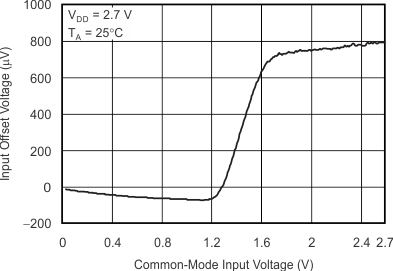 Figure 2. Input Offset Voltage vs Common-Mode Input Voltage
Figure 2. Input Offset Voltage vs Common-Mode Input Voltage
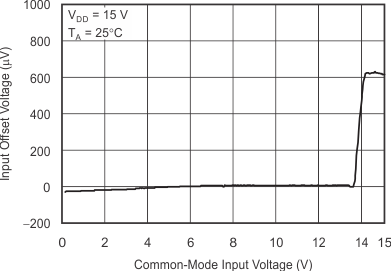 Figure 4. Input Offset Voltage vs Common-Mode Input Voltage
Figure 4. Input Offset Voltage vs Common-Mode Input Voltage
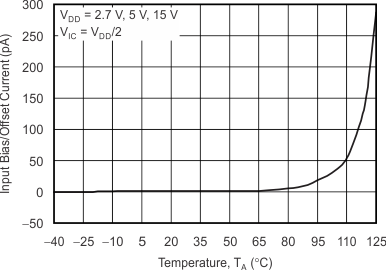 Figure 6. Input Bias or Offset Current vs Free-Air Temperature
Figure 6. Input Bias or Offset Current vs Free-Air Temperature
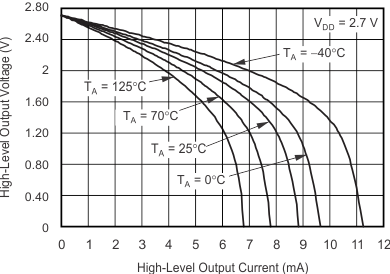 Figure 8. High-Level Output Voltage vs High-Level Output Current
Figure 8. High-Level Output Voltage vs High-Level Output Current
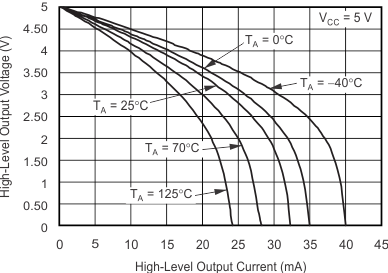 Figure 10. High-Level Output Voltage vs High-Level Output Current
Figure 10. High-Level Output Voltage vs High-Level Output Current
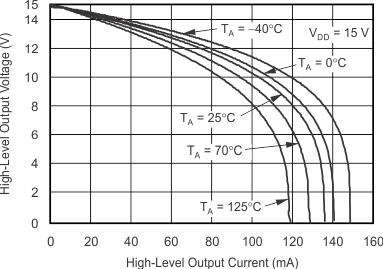 Figure 12. High-Level Output Voltage vs High-Level Output Current
Figure 12. High-Level Output Voltage vs High-Level Output Current
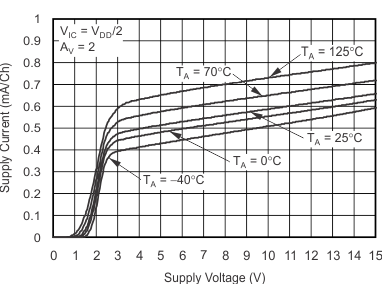 Figure 14. Supply Current vs Supply Voltage
Figure 14. Supply Current vs Supply Voltage
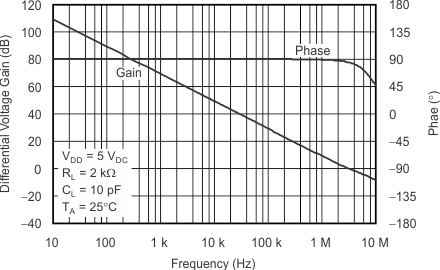 Figure 16. Differential Voltage Gain and Phase vs Frequency
Figure 16. Differential Voltage Gain and Phase vs Frequency
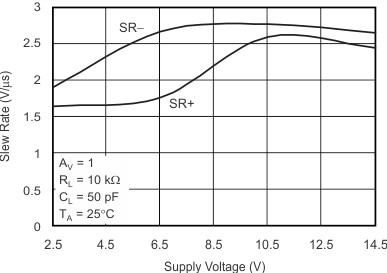 Figure 18. Slew Rate vs Supply Voltage
Figure 18. Slew Rate vs Supply Voltage
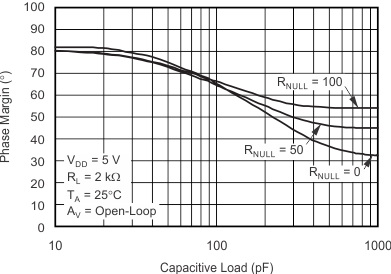 Figure 20. Phase Margin vs Capacitive Load
Figure 20. Phase Margin vs Capacitive Load
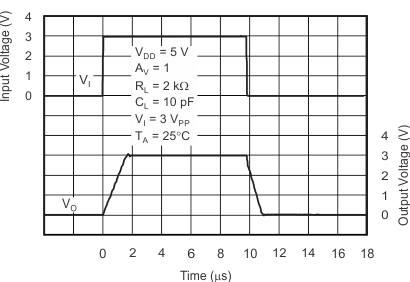 Figure 22. Voltage-Follower Large-Signal Pulse Response
Figure 22. Voltage-Follower Large-Signal Pulse Response
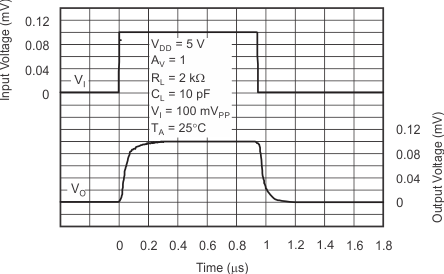 Figure 24. Voltage-Follower Small-Signal Pulse Response
Figure 24. Voltage-Follower Small-Signal Pulse Response
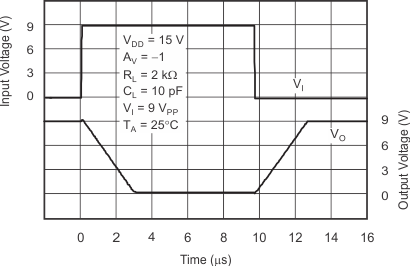 Figure 26. Inverting Large-Signal Response
Figure 26. Inverting Large-Signal Response
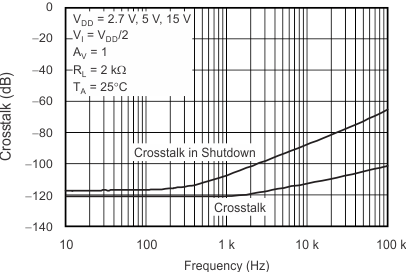 Figure 28. Crosstalk vs Frequency
Figure 28. Crosstalk vs Frequency
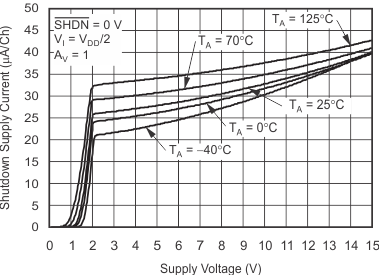 Figure 30. Shutdown Supply Current vs Supply Voltage
Figure 30. Shutdown Supply Current vs Supply Voltage
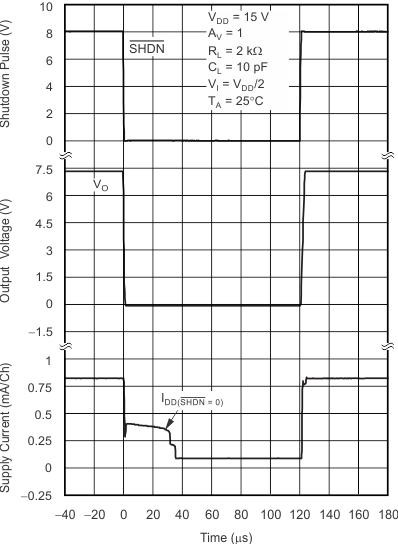 Figure 32. Shutdown Supply Current and Output Voltage vs Time
Figure 32. Shutdown Supply Current and Output Voltage vs Time
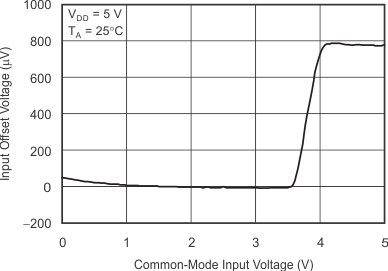 Figure 3. Input Offset Voltage vs Common-Mode Input Voltage
Figure 3. Input Offset Voltage vs Common-Mode Input Voltage
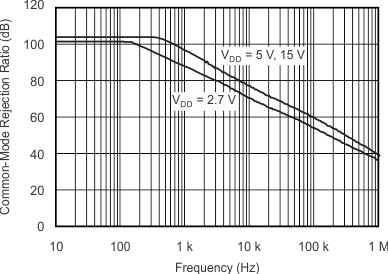 Figure 5. Common-Mode Rejection Ratio vs Frequency
Figure 5. Common-Mode Rejection Ratio vs Frequency
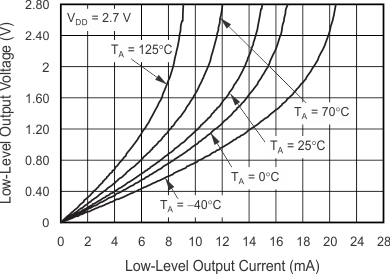 Figure 7. Low-Level Output Voltage vs Low-Level Output Current
Figure 7. Low-Level Output Voltage vs Low-Level Output Current
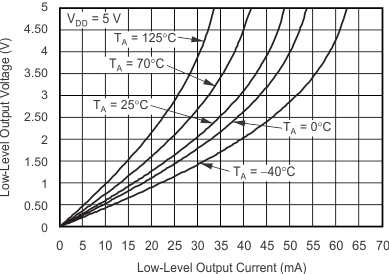 Figure 9. Low-Level Output Voltage vs Low-Level Output Current
Figure 9. Low-Level Output Voltage vs Low-Level Output Current
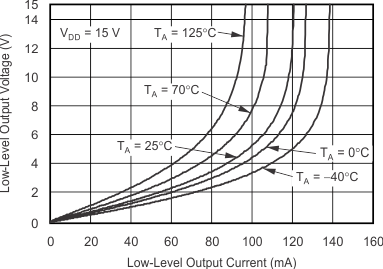 Figure 11. Low-Level Output Voltage vs Low-Level Output Current
Figure 11. Low-Level Output Voltage vs Low-Level Output Current
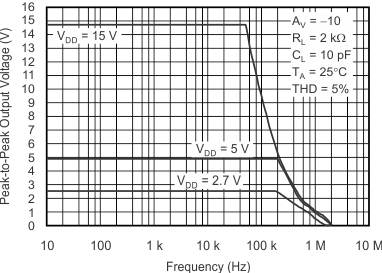 Figure 13. Peak-to-Peak Output Voltage vs Frequency
Figure 13. Peak-to-Peak Output Voltage vs Frequency
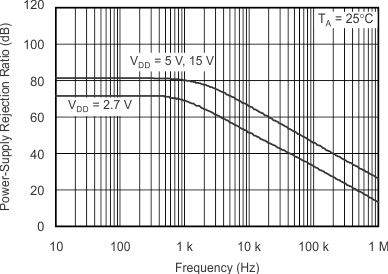 Figure 15. Power Supply Rejection Ratio vs Frequency
Figure 15. Power Supply Rejection Ratio vs Frequency
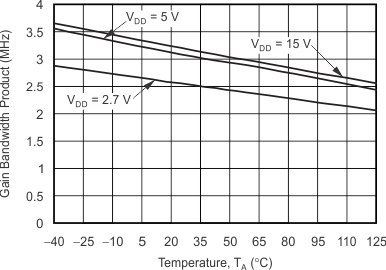 Figure 17. Gain Bandwidth Product vs Free-Air Temperature
Figure 17. Gain Bandwidth Product vs Free-Air Temperature
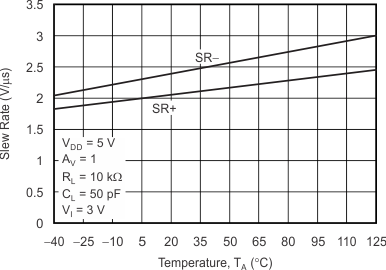 Figure 19. Slew Rate vs Free-Air Temperature
Figure 19. Slew Rate vs Free-Air Temperature
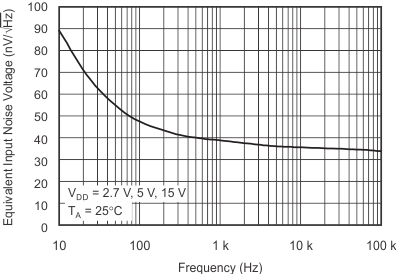 Figure 21. Equivalent Input Noise Voltage vs Frequency
Figure 21. Equivalent Input Noise Voltage vs Frequency
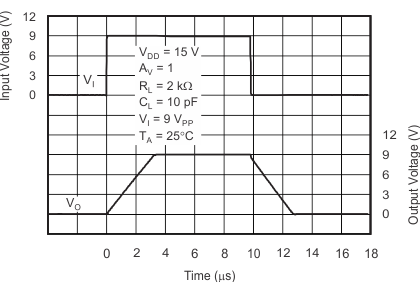 Figure 23. Voltage-Follower Large-Signal Pulse Response
Figure 23. Voltage-Follower Large-Signal Pulse Response
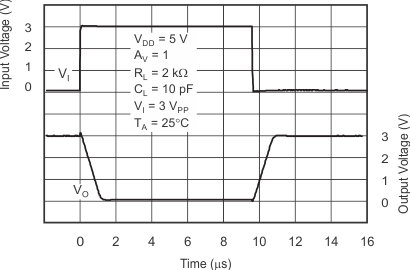 Figure 25. Inverting Large-Signal Response
Figure 25. Inverting Large-Signal Response
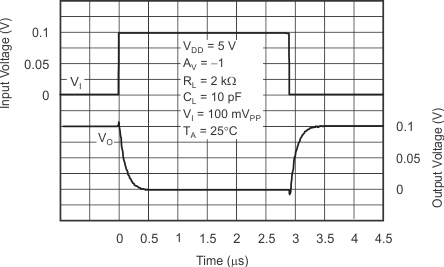 Figure 27. Inverting Small-Signal Response
Figure 27. Inverting Small-Signal Response
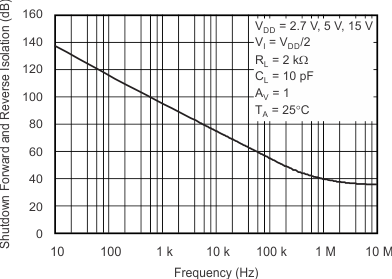 Figure 29. Shutdown Forward and Reverse Isolation vs Frequency
Figure 29. Shutdown Forward and Reverse Isolation vs Frequency
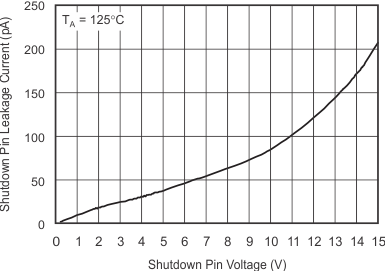 Figure 31. Shutdown Pin Leakage Current vs Shutdown Pin Voltage
Figure 31. Shutdown Pin Leakage Current vs Shutdown Pin Voltage
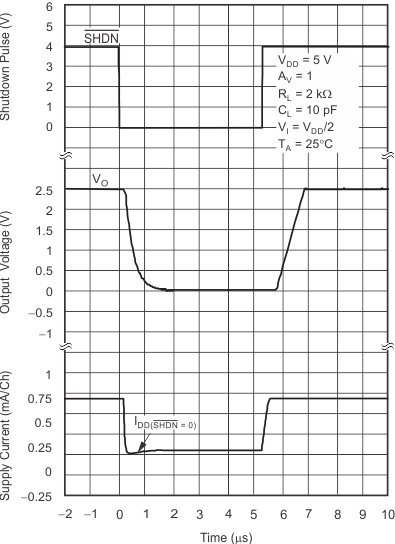 Figure 33. Shutdown Supply Current/output Voltage vs Time
Figure 33. Shutdown Supply Current/output Voltage vs Time
8 Detailed Description
8.1 Overview
The TLV237x single-supply CMOS operational amplifiers provide rail-to-rail input and output capability with
3-MHz bandwidth. Consuming only 550 μA the TLV237x is the perfect choice for portable and battery-operated applications. The maximum recommended supply voltage is 16 V, which allows the devices to be operated from (±8-V supplies down to ±1.35 V) a variety of rechargeable cells. The rail-to-rail inputs with high input impedance make the TLV237x ideal for sensor signal-conditioning applications.
8.2 Functional Block Diagram

8.3 Feature Description
8.3.1 Rail-to-Rail Input Operation
The TLV237x input stage consists of two differential transistor pairs, NMOS and PMOS, that operate together to achieve rail-to-rail input operation. The transition point between these two pairs can be seen in Figure 2, Figure 3, and Figure 4 for a 2.7-V, 5-V, and 15-V supply. As the common-mode input voltage approaches the positive supply rail, the input pair switches from the PMOS differential pair to the NMOS differential pair. This transition occurs approximately 1.35 V from the positive rail and results in a change in offset voltage due to different device characteristics between the NMOS and PMOS pairs. If the input signal to the device is large enough to swing between both rails, this transition results in a reduction in common-mode rejection ratio (CMRR). If the input signal does not swing between both rails, it is best to bias the signal in the region where only one input pair is active. This is the region inFigure 2 through Figure 4 where the offset voltage varies slightly across the input range and optimal CMRR can be achieved. This has the greatest impact when operating from a 2.7-V supply voltage.
8.3.2 Driving a Capacitive Load
When the amplifier is configured in this manner, capacitive loading directly on the output decreases the device phase margin leading to high frequency ringing or oscillations. Therefore, for capacitive loads of greater than 10 pF, TI recommends that a resistor be placed in series (RNULL) with the output of the amplifier, as shown in Figure 34. A minimum value of 20 Ω should work well for most applications.
 Figure 34. Driving a Capacitive Load
Figure 34. Driving a Capacitive Load
8.3.3 Offset Voltage
The output offset voltage, (VOO) is the sum of the input offset voltage (VIO) and both input bias currents (IIB) times the corresponding gains. Figure 35 can be used to calculate the output offset voltage:
 Figure 35. Output Offset Voltage Model
Figure 35. Output Offset Voltage Model
8.3.4 General Configurations
When receiving low-level signals, limiting the bandwidth of the incoming signals into the system is often required. The simplest way to accomplish this is to place an RC filter at the noninverting terminal of the amplifier (see Figure 36).
 Figure 36. Single-Pole Low-Pass Filter
Figure 36. Single-Pole Low-Pass Filter
If even more attenuation is needed, a multiple pole filter is required. The Sallen-Key filter can be used for this task. For best results, the amplifier must have a bandwidth that is 8 to 10 times the filter frequency bandwidth. Failure to do this can result in phase shift of the amplifier.
 Figure 37. 2-Pole Low-Pass Sallen-Key Filter
Figure 37. 2-Pole Low-Pass Sallen-Key Filter
8.3.5 Shutdown Function
Three members of the TLV237x family (TLV2370, TLV2373, and TLV2375) have a shutdown terminal for conserving battery life in portable applications. When the shutdown terminal is tied low, the supply current is reduced to 25 μA/channel, the amplifier is disabled, and the outputs are placed in a high impedance mode. To enable the amplifier, the shutdown terminal can either be left floating or pulled high. When the shutdown terminal is left floating, take care to ensure that parasitic leakage current at the shutdown terminal does not inadvertently place the operational amplifier into shutdown.
8.4 Device Functional Modes
The TLV2371, TLV2372, and TLV2374 have a single functional mode. These devices are operational as long as the power-supply voltage is between 2.7 V (±1.35 V) and 16 V (±8 V).
The TLV2370, TLV2373, and TLV2375 are likewise operational as long as the power-supply voltage is between 2.7 V (±1.35 V) and 16 V (±8 V), additionally these devices also have a shutdown capability. When the shutdown control pin is driven below 0.8 V above ground, the device is in shutdown. If the shutdown control pin voltage is driven to greater than 2 V above ground, the device is in its normal operating mode. See Shutdown Function for additional information regarding shutdown operation.
9 Application and Implementation
NOTE
Information in the following applications sections is not part of the TI component specification, and TI does not warrant its accuracy or completeness. TI’s customers are responsible for determining suitability of components for their purposes. Customers should validate and test their design implementation to confirm system functionality.
9.1 Application Information
When designing for low power, choose system components carefully. To minimize current consumption, select large-value resistors. Any resistors can react with stray capacitance in the circuit and the input capacitance of the operational amplifier. These parasitic RC combinations can affect the stability of the overall system. Use of a feedback capacitor assures stability and limits overshoot or gain peaking.
9.2 Typical Application
A typical application for an operational amplifier is an inverting amplifier, as shown in Figure 38. An inverting amplifier takes a positive voltage on the input and outputs a signal inverted to the input, making a negative voltage of the same magnitude. In the same manner, the amplifier also makes negative input voltages positive on the output. In addition, amplification can be added by selecting the input resistor RI and the feedback resistor RF.
 Figure 38. Application Schematic
Figure 38. Application Schematic
9.2.1 Design Requirements
The supply voltage must be chosen to be larger than the input voltage range and the desired output range. The limits of the input common-mode range (VCM) and the output voltage swing to the rails (VO) must also be considered. For instance, this application scales a signal of ±0.5 V (1 V) to ±1.8 V (3.6 V). Setting the supply at ±2.5 V is sufficient to accommodate this application.
9.2.2 Detailed Design Procedure
Determine the gain required by the inverting amplifier using Equation 1 and Equation 2:


When the desired gain is determined, choose a value for RI or RF. Choosing a value in the kΩ range is desirable for general-purpose applications because the amplifier circuit uses currents in the milliamp range. This milliamp current range ensures the device does not draw too much current. The trade-off is that very large resistors (100s of kΩ) draw the smallest current but generate the highest noise. Very small resistors (100s of Ω) generate low noise but draw high current. This example uses 10 kΩ for RI, meaning 36 kΩ is used for RF. These values are determined by Equation 3:

9.2.3 Application Curve
 Figure 39. Inverting Amplifier Input and Output
Figure 39. Inverting Amplifier Input and Output
10 Power Supply Recommendations
The TLV237x family is specified for operation from 2.7 V to 15 V (±1.35 V to ±7.5 V); many specifications apply from –40°C to +125°C. The Typical Characteristics presents parameters that can exhibit significant variance with regard to operating voltage or temperature.
CAUTION
Supply voltages larger than 16 V can permanently damage the device (see the Absolute Maximum Ratings table).
Place 0.1-μF bypass capacitors close to the power-supply pins to reduce errors coupling in from noisy or high-impedance power supplies. For more detailed information on bypass capacitor placement; see Layout.
11 Layout
11.1 Layout Guidelines
To achieve the levels of high performance of the TLV237x, follow proper printed-circuit board design techniques. A general set of guidelines is given in the following.
- Ground planes—TI highly recommends using a ground plane on the board to provide all components with a low inductive ground connection. However, in the areas of the amplifier inputs and output, the ground plane can be removed to minimize the stray capacitance.
- Proper power supply decoupling—Use a 6.8-μF tantalum capacitor in parallel with a 0.1-μF ceramic capacitor on each supply terminal. It may be possible to share the tantalum among several amplifiers depending on the application, but a 0.1-μF ceramic capacitor should always be used on the supply terminal of every amplifier. In addition, the 0.1-μF capacitor must be placed as close as possible to the supply terminal. As this distance increases, the inductance in the connecting trace makes the capacitor less effective. The designer should strive for distances of less than 0.1 inches between the device power terminals and the ceramic capacitors.
- Sockets—Sockets can be used but are not recommended. The additional lead inductance in the socket pins will often lead to stability problems. Surface-mount packages soldered directly to the printed-circuit board is the best implementation.
- Short trace runs and compact part placements—Optimum high performance is achieved when stray series inductance has been minimized. To realize this, the circuit layout must be made as compact as possible, thereby minimizing the length of all trace runs. Pay particular attention to the inverting input of the amplifier. Its length must be kept as short as possible. This helps to minimize stray capacitance at the input of the amplifier.
- Surface-mount passive components—Using surface-mount passive components is recommended for high performance amplifier circuits for several reasons. First, because of the extremely low lead inductance of surface-mount components, the problem with stray series inductance is greatly reduced. Second, the small size of surface-mount components naturally leads to a more compact layout thereby minimizing both stray inductance and capacitance. If leaded components are used, TI recommends that the lead lengths be kept as short as possible.
11.2 Layout Example
 Figure 40. Schematic Representation
Figure 40. Schematic Representation
 Figure 41. Operational Amplifier Board Layout for Noninverting Configuration
Figure 41. Operational Amplifier Board Layout for Noninverting Configuration
11.3 Power Dissipation Considerations
For a given θJA, the maximum power dissipation is shown in Figure 42 and is calculated by Equation 4:

where
- PD = Maximum power dissipation of TLV237x IC (watts)
- TMAX = Absolute maximum junction temperature (150°C)
- TA = Free-ambient air temperature (°C)
- θJA = θJC (Thermal coefficient from junction to case) + θCA (Thermal coefficient from case to ambient air (°C/W))
